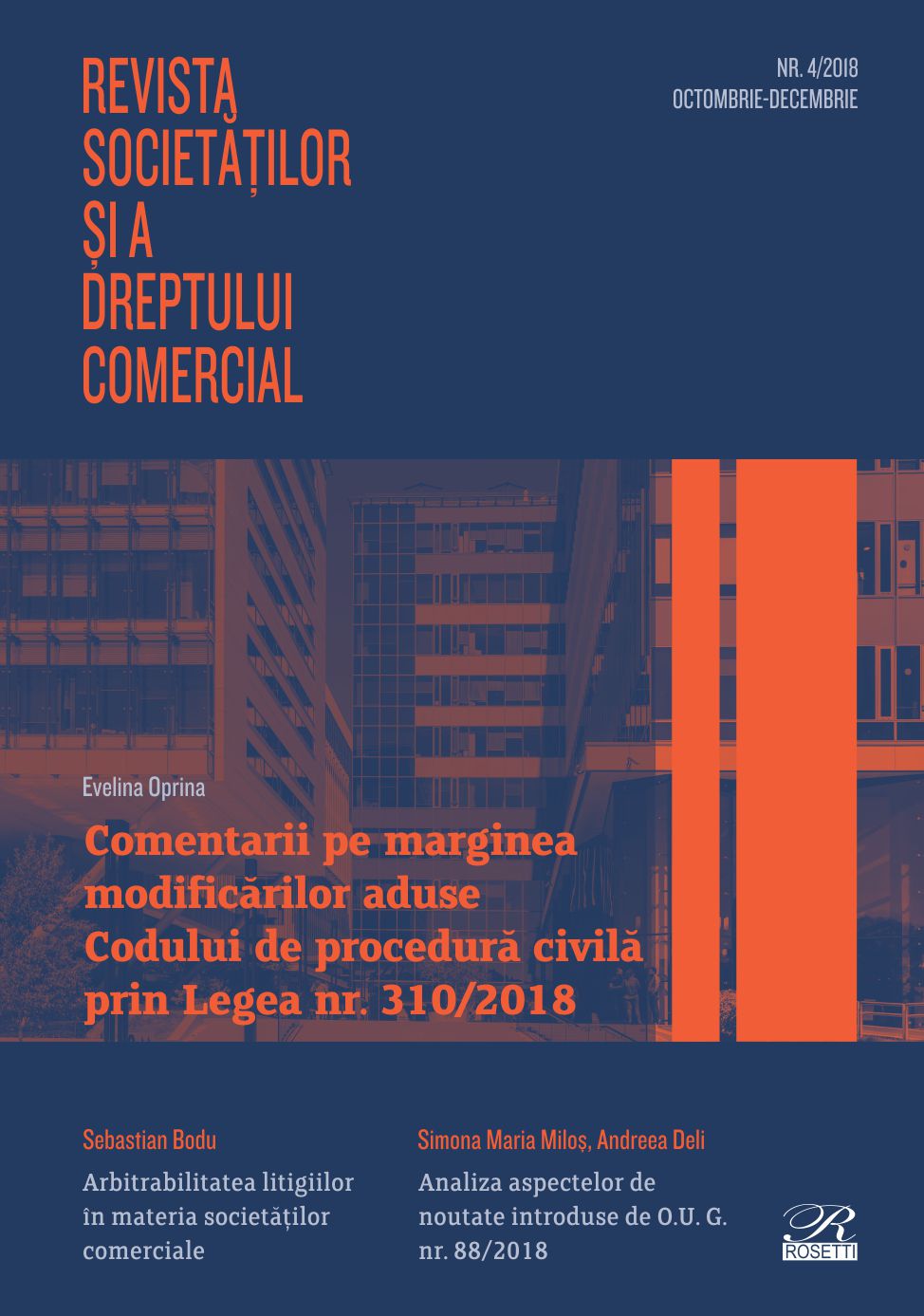Managementul drepturilor de proprietate intelectuală
într-o societate comercială
The management of a company’s intellectual property rights
Author(s): Irina AlbuşelSubject(s): Law, Constitution, Jurisprudence, Court case
Published by: Editura Rosetti International
Keywords: Intellectual property; copyright; transfer of copyright; ordering contract for future works; work invention; commercial secret; software; industrial property; trademarks; designs;
Summary/Abstract: Rezumat: Drepturile de proprietate intelectuală reprezintă, în multe cazuri, active intangibile foarte valoroase pentru o societate. Asigurarea protecţiei juridice a acestora este importantă pentru valorificarea lor economică, dar şi pentru prevenirea oricăror acţiuni ale terţilor de natură să aducă atingere acestor drepturi. De asemenea, societatea însăşi trebuie să vegheze la respectarea drepturilor de proprietate intelectuală aparţinând altor persoane şi să se abţină de la orice acţiune de natură a prejudicia drepturile acestora. Strategia cu privire la drepturile de proprietate intelectuală într-o societate trebuie corelată cu nevoile specifice, în funcţie de obiectul de activitate, de strategia privind cercetarea – dezvoltarea (dacă este cazul), de modul de desfăşurare a activităţii comerciale (e.g. în mediul online sau offline, etc). Prin urmare, este utilă crearea unei planificări interne cu privire la drepturile de proprietate intelectuală, prin care sa se stabilească: a) în ce măsură societatea doreşte să investească în crearea şi exploatarea drepturilor de proprietate intelectuală sau doar în achiziţionarea acestora de la terţi (în proprietate sau prin obţinerea unui drept de utilizare, licenţă); b) este necesară realizarea unui inventar intern cu privire la drepturile de proprietate intelectuală (“DPI”) deţinute şi utilizate, respectiv: (i) DPI aflate în proprietate – în ce măsură acestea sunt utilizate de către societate? Au fost acordate licenţe către terţi şi în ce condiţii? (ii) DPI utilizate de societate, dar care nu se afla în proprietatea acesteia – în ce masură există drepturi de utilizare şi care este întinderea, respectiv limitele utilizării acestora din punct de vedere juridic? (iii) Care sunt costurile dezvoltării versus costurile achiziţionării DPI şi ce este mai avantajos din punct de vedere economic pentru societate? c) în toate cazurile, este necesară revizuirea contractelor având clauze de proprietate intelectuală pentru stabilirea drepturilor şi obligaţiilor societăţii, inclusiv (iar în unele cazuri, în special) clauzele din contractele de muncă. Prezentul articol îşi propune să prezinte câteva dintre aspectele juridice necesar a fi cunoscute şi luate în considerare în cadrul elaborării unei strategii comerciale pentru dezvoltarea, identificarea şi gestionarea protecţiei drepturilor de proprietate intelectuală existente într-o societate, dintr-o dublă perspectivă: atât în vederea valorificării acestora, cât şi în vederea asigurării protecţiei juridice faţă de terţi. Cuvinte Abstract: The intellectual property rights represent, in many cases, intangible assets which are very valuable to a company. Ensuring the legal protection of the intellectual property rights is important not only for their economic exploitation, but also for the prevention of any action from third parties which may affect these rights. Also, the company itself must ensure that intellectual property rights of others are observed by it and it should refrain from any action which may be likely to infringe such other parties’ rights. A company’s strategy in relation to intellectual property rights must be correlated with its specific needs according to its object of activity, to its strategy regarding the research and development (if the case), as well as to its operational business policy (e.g. in online or offline, etc.). Therefore, it is useful to create an internal planning regarding the intellectual property rights, establishing: a) if the company envisages to invest in creating and exploiting the intellectual property rights or if it envisages to acquire them from third parties (in property or by obtaining a licence); b) if it is necessary to make an internal inventory regarding the owned and used intellectual property rights („IP rights”), namely: (i) owned IP rights – are they used by the company? have licences have been granted to third parties and in which conditions? (ii) IP rights used by the company, but which are not in its property – if there are such rights of use and the conditions in which they can be used; (iii) the cost of development versus the costs of acquisition of IP rights and what would be the most suitable for the company from a cost effective perspective; c) in all cases, if it is necessary to review the contracts with intellectual property clauses in order to establish the rights and obligations of the company, including (in some cases, especially) the clauses from employment contracts. This article aims to present some of the legal aspects that need to be known and taken into account when establishing a commercial strategy for developing, identifying and managing the protection of the company’s intellectual property rights, from a double perspective: both for their exploitation, as well as for their legal protection towards third parties.
Journal: Revista Societăților și a Dreptului Comercial
- Issue Year: 2018
- Issue No: 1
- Page Range: 1-18
- Page Count: 18
- Language: Romanian
- Content File-PDF

